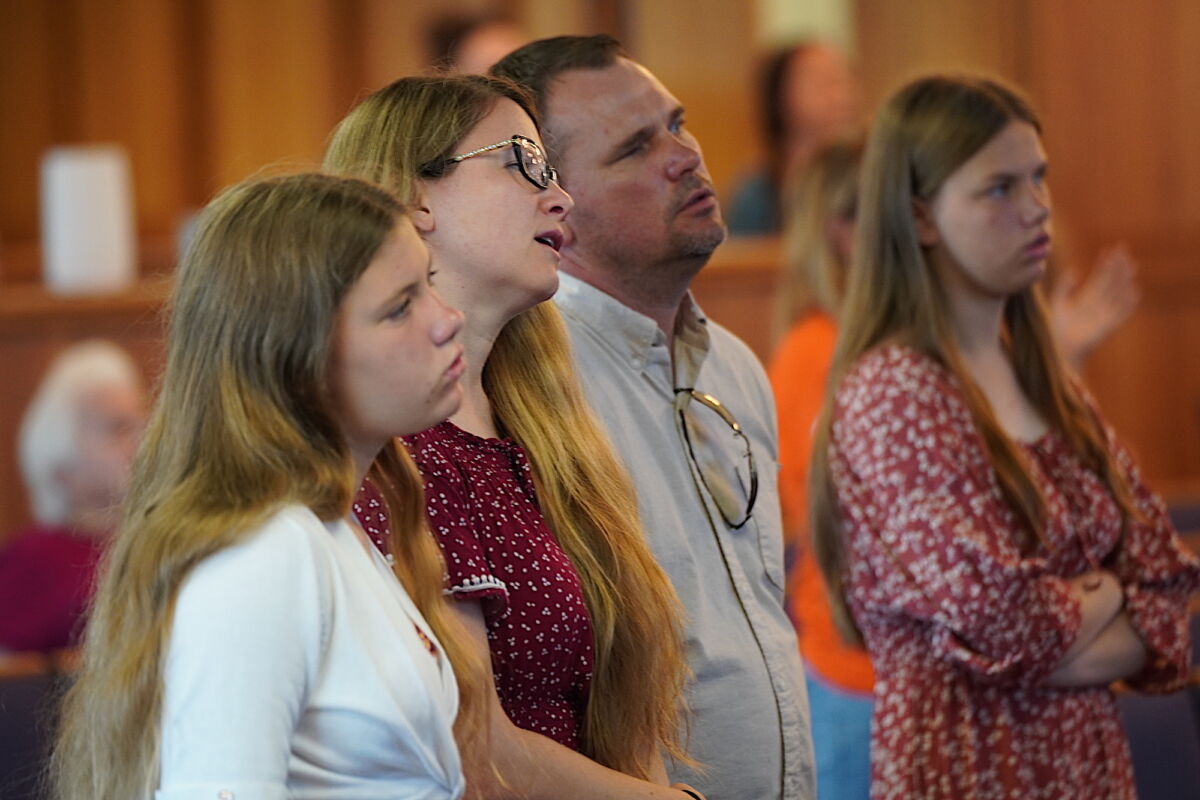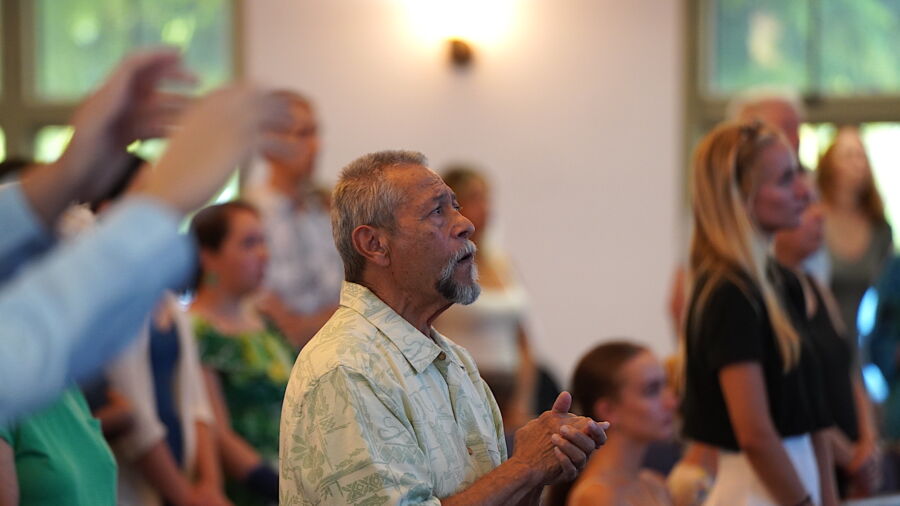KIHEI, Hawaii—While the physical toll of the Maui wildfires was unspeakable destruction, the spiritual battle to heal and rebuild has only just begun for Hawaii’s second-largest island.
On Aug. 13, the first Sunday church services were held across the lush green tropical island for thousands of grieving residents still in shock in the aftermath of last week’s wildfires.
Over 90 people perished; thousands are still missing or displaced, and thousands of acres and buildings burned in West Maui’s Lahaina—a word that means “cruel or merciless sun” in the Hawaiian language—and other communities.
In time, Maui County officials will announce the victims and the funerals will commence.
For those who lost loved ones, homes, or livelihoods—in many cases, everything—the question has cut to the core of their faith.
How can one still believe amid so much death and destruction?
At Hope Chapel in Kihei, Maui—23 miles from Lahaina—where the worst devastation occurred, the grieving gathered for support from their neighbors and words of hope and resilience from spiritual leaders.
“For us together in this room, this is a darkness hour for us as an island,” said worship leader Erin Marsman. “Every single person that has walked into this space carries burdens. Some of you have lost everything.”
Healing the Broken-Hearted

For now, hope, faith, prayer—and love—must sustain the broken-hearted, lead pastor Ben Prangnell told more than 100 people at Sunday’s 8:30 a.m. service.
“It feels like my head’s spinning. Our hearts hurt. Our emotions are so raw. But we’ve come to the right place. Because He is where our help comes from,” Mr. Prangnell said.
“This is a time of great sorrow. And we need time to mourn losing loved ones and friends, homes, businesses, our beloved Lahaina town.”
But with great sorrow comes great opportunity for healing and spiritual growth, Mr. Prangnell said.
And in this time of impossible suffering, he urged those gathered to look out for one another and remain hopeful.
“Just do for one what you would do for everyone. Expressing your feelings is the beginning of healing. And so it’s good to do that together and support one another as we process losses.”
Executive Pastor Jim Franks said the survivors must work through their feelings and that to do so, many have offered support to the relief effort in many unexpected ways.
“I’ve seen an incredible outpouring of support, love, and prayer from so many people saying, ‘How can I help?'” Mr. Franks said.
Shortly after the fires began on Aug. 8, the chapel’s living room became a donation and distribution center for the food bank and supplies. It has been filled five times with desperately needed aid to send out to Lahaina by boat or vehicle convoys.
Many displaced families arrived at the church, asking for help.
“We have a lot more to do,” Mr. Franks said. “We’re going to be in this for the long haul. It’s been a few days, and all of the needs are becoming apparent.”
John Martin, Hope Chapel’s facilities pastor, said the emotional impact of the four wildfires has been overwhelming, with few people left unscathed.
With a six-person caravan, church volunteers made 11 stops, fed the elderly, and distributed backpacks to children as the need for essential supplies continued to mount.
“We stood shoulder to shoulder with people we didn’t know,” Pastor Martin said. “It’s amazing to be a part of this story of the people of God and to see you guys come alive and respond. It’s been nonstop walking with all of you and being able to serve.”
Just Needed a Prayer
In one instance, a Maui resident who lost his 15-year-old brother in the Lahaina fire told church volunteers all he wanted was “a prayer.”
“And that’s just one story. There are thousands of stories going around. We will persevere.”
“Maui is weeping. Maui is grieving. We’re lamenting today,” said Derek LaFontaine, the chapel’s care and counseling pastor and a former Seattle-area firefighter.
“We know there’s hope on the other side of this. We know so many people are questioning their faith.”
Days or weeks from now, “we’re going to start hearing those stories and seeing those faces,” he said.
“As a church, don’t miss this moment to engage with those lamenting and grieving. You’re all counselors. Pray together. Pray alone.”
Pastor Van Michael Komatsu delivered a passionate Sunday sermon on the wildfire tragedy at Kihei Baptist Church.
“It has been a very bad week. It has been horrific for thousands of people on our island. My heart is heavy, sad, grieving, broken,” Pastor Komatsu said.
“Being from Maui County, I have never seen the kinds of disaster, destruction, and death on our island that has happened this week.”
On Maui, considered a tropical paradise of indescribable natural beauty, “this past Tuesday, Aug. 8, 2023, will become one of the most infamous days in Hawaii’s history,” he said.
‘Terrifying’ Spectacle
Mr. Komatsu said the wildfires, driven by hurricane-force winds, ravaged large portions of Maui and were terrifying to watch.
“I stayed up most of the night in case I had to get my wife, my 2-year-old daughter, and my 6-week-old son out of here,” he said.
Survivors spoke of “tornadoes of ash,” people trapped in cars in gridlocked traffic on Lahaina’s Front Street, and panicked residents “hopping the sea wall and jumping into the ocean” to escape the suffocating smoke and heat.
“You can’t be ignorant of this. You need to feel this. There is unspeakable destruction. Lahaina is not just a tourist town. It’s a place of rich Hawaiian history, which housed thousands of local families in multi-generational homes. And now it’s leveled—businesses, restaurants, homes—all gone,” Mr. Komatsu said.
“Like an atomic bomb was dropped and went off” is how he described the wildfire’s aftermath in Lahaina. “People died trying to get out of their homes. People died in their vehicles because the fire melted, and smoke inhalation got them. People died halfway out of windows.”
He said the estimated cost or such “unspeakable destruction” is in the billions and that it will take years to rebuild the town.
“There is so much death. There is death in Hawaii like there has never been in our lives. It is not only the deadliest wildfire in Hawaii’s history. It’s the deadliest in U.S. history. We’ve had other natural disasters in Hawaii before—but nothing like this,” Mr. Komatsu said.
“Grieve to feel. Weep. We must not gloss over the testimonies of survivors and their experiences. The testimonies are many.”
To see so much destruction was “shocking,” one churchgoer told The Epoch Times.
Another said he saw the fire approaching his property but was ready with backhoes making fire trails.
“We were ready to go to war,” he said. “First, I was fearful. But as night came on, at about 3 in the morning, I just gave up to God and went to sleep.”
From The Epoch Times

